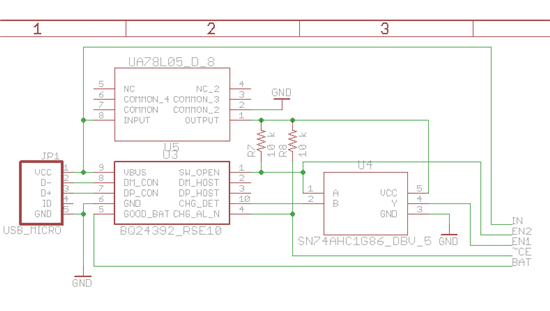Hi,
I am designing a charger application with a BQ24075. The source for charging the battery is a micro USB connector, and I would like to use a BQ24392 for setting the charge current by using the implementation of the USB battery charger specification v1.2 which the BQ24392 implements. I have been trying to find some application example of this type which uses the BQ24392 to no avail. Are there any examples available somewhere?
If not, could someone comment on the solution I have come up with? From what I understand from the datasheets, I need to set
BQ24075 - BQ24392:
EN2 <- SW_OPEN
EN1 <- XOR(SW_OPEN,CHG_DET)
CE <- CHG_AL_N
BAT -> GOOD_BAT
The schematics if have so far is the following, any hints if I am on the right way?
Thanx for any help!


